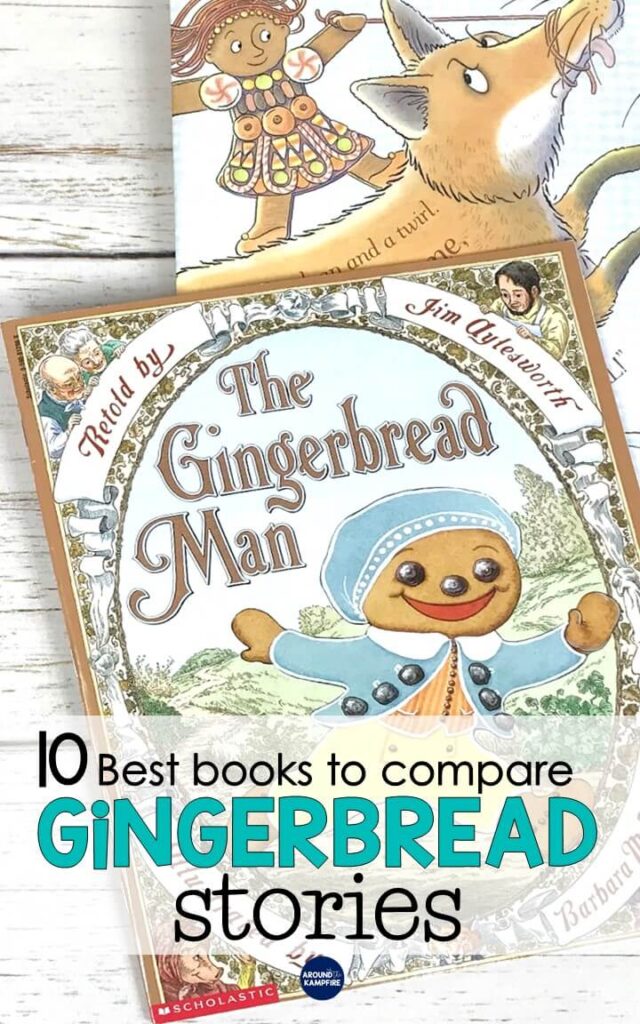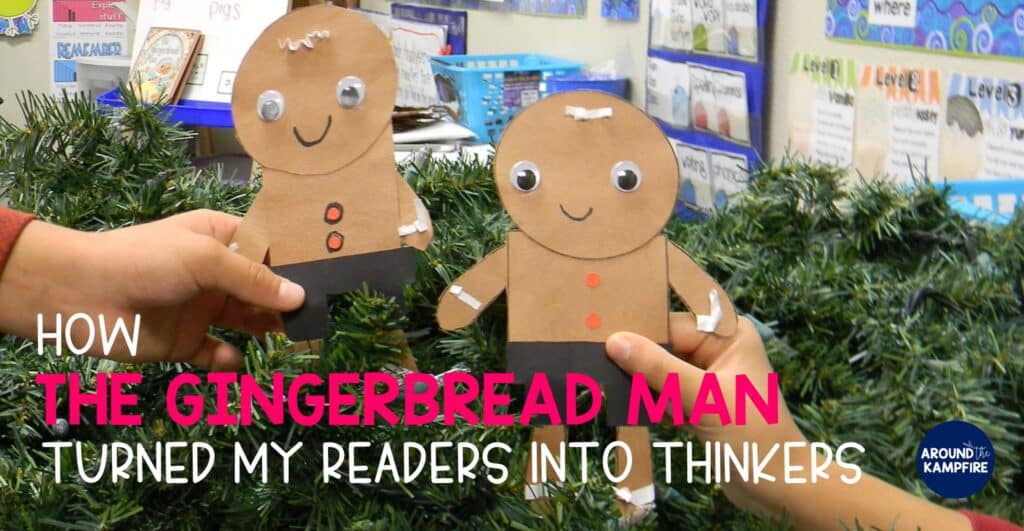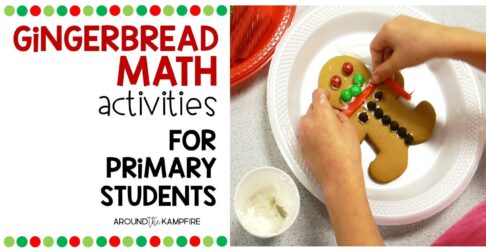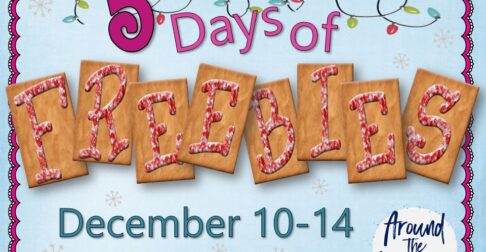
Teaching Ideas Using Gingerbread Man Books
I’m a huge fan of using Gingerbread Man books to address a multitude of reading standards, but especially for comparing story elements. There are so many delightful versions available for comparing and contrasting characters, illustrations, settings, and plot. Gingerbread read alouds lend themselves perfectly to comparing problems/solutions, how characters respond to major challenges, how a character changes during a story, and for teaching students about non-literal language. Here is a list of my favorite versions of The Gingerbread Man for comparing story elements and so much more!
Note: The following book links are Amazon affiliate links. As an Amazon Associate I earn a which a small commission from qualifying purchases.
Gingerbread Man Books to Compare Settings

When beginning our gingerbread man reading unit, this lovely book is the one I always start with. It’s a traditional version where a lonely old couple wishes for a child. What makes it unique is the setting and time period. The illustrations depict a setting from the 1900’s and students always notice the characters are dressed in “old fashioned” clothing. This version is a wonderful one for not only comparing settings, but focusing on illustrations, and how readers can notice details to learn information about the story that the words don’t tell us.
In the old woman’s kitchen is a cast iron stove. The family portraits that hang in their living room are in black and white. this version is a great one to contrast the setting and time period with other, more modern versions, like The Gingerbread Man Loose in the School.
Click here to see the guiding questions I use and read more about using the illustrations in gingerbread man books.
This delightful western themed version takes place in the desert. Living in Arizona, it’s a favorite for us. The gingerbread cowboy tries to outsmart the ranchers and is chased by many different desert animals trying to eat him. A fun contrast to the traditional versions, I also use this book when comparing characters and discussing how authors use repetition in a story. We compare all the different chants the gingerbread characters sing and how authors use repetition to tell more about a character and add excitement to a story.
The Musubi Man: Hawaii’s Gingerbread Man
The Musubi Man is a fun and tropical version set in Hawaii. It’s a great one for comparing settings, characters, and cultural customs with Senorita Gordita, The Matzo Ball Boy, and The Runaway Rice Cake. The Musubi Man includes a glossary in the back of the book for students to learn about the different foods, plants, and animals native to Hawaii. One year we made edible Musubi Men with cream cheese spread on rice cakes, sliced olives for eyes, a raspberry nose, and potato sticks for his hair! In the story his nose is a red kidney bean, but my students turned up THEIR noses at the thought of eating that!
Gingerbread Man Books to Compare Problem and Solution

The Gingerbread Man Loose in the School
I adore this book. Written in the same rhythm as T’was the Night Before Christmas, this gingerbread man has a slightly different problem than in most versions. Set in an elementary school the gingerbread man is the one doing the chasing! He is running from place to place looking for his class that left him. I use this one when comparing characters and settings, but I especially like it for identifying non-literal language. this little guy is “one tough cookie”, a reference that is also use in The Gingerbread Girl. These references make a good jumping off point for talking with your students about literal and non-literal language and having them use context clues to determine meaning. this one is a must-add to your gingerbread book collection!
The fast and sassy gingerbread girl is a smart cookie! So smart, that she outsmarts the sneaky fox. Sharper than her brother, who was eaten in the past, this version has a surprising twist at the end! It’s a great one for addressing how a character responds to challenges and finds a solution to a problem. It also lends itself well to retelling and comparing the ending to other versions. The gingerbread girl not only outsmarts the fox, but turns the tables and tames him.
As I mentioned before, The Gingerbread Girl is a good book to use for identifying figurative language. A fun discussion to have with your class is to ask whether they think the gingerbread girl is a “smart cookie” or a “tough cookie”. Have students give their opinions and story evidence to support it. I do this activity after we’ve read both gingerbread girl books.
Click here to see our class anchor chart with my students’ opinions and story evidence.
The Gingerbread Girl Goes Animal Crackers
This beautifully illustrated version is filled with descriptive words that are ideal for adding a vocabulary lesson to your book study. Words like menagerie, troop, mob, flock, and gang provide a quick grammar and collective nouns mini lesson too! As you collect gingerbread man books, you’ll definitely want to add this one!
This gingerbread adventure and it’s cookie pirate characters, is completely different from traditional versions. It’s a funny story about a little boy who makes a gingerbread pirate crew to leave out for Santa on Christmas Eve. During the night, Captain Cookie goes on the hunt to rescue his crew from the mysterious”cannibal” called Santa Claus!
Gingerbread Man Books to Compare Characters

All of the gingerbread man books I’ve shared above can be used to compare and analyze characters. Two of the books I use are the Gingerbread Girl and The Gingerbread Man Loose in the School since they are both “tough cookies” but for very different reasons. We focus on what readers can infer about these characters based on what they say and do. Both stories are good one for describing character traits and having students recall events to support them.
Free Gingerbread Story Elements Booklet
Click here to download a FREE gingerbread story elements charts for comparing your favorite versions!
Comparing your favorite versions of gingerbread man books is a wonderful way to address a multitude of reading standards and makes for a fun and high engagement book study for your students! Try these gingerbread man books and teaching ideas as you plan your next gingerbread reading unit.
Click here to see the complete gingerbread reading unit & teaching Power Point I use with these books.
Would you like to see how I teach reading using gingerbread books in my classroom? Click on any of the pictures below.
Be sure to grab the FREE Story Elements Charts in the post!
So you don’t forget it, Pin it!

Happy teaching!










I am so excited to read this! I’ve been doing a gingerbread unit for 22 years with my first graders, reading all of these stories (minus the Musubi Man) and now I’m in third grade. I cannot wait to read these with a whole different purpose with these kiddos!
By the way, I bet you’d love the Cajun Gingerbead story! Find it and add it to your lesson and collection!
I’m so glad you found some ideas you can use Kimberley! I’ll definitely look for the Cajun Gingerbread Man, thank you for the recommendation!